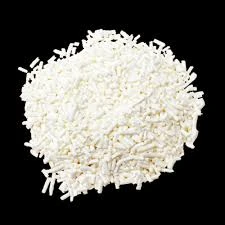
commonly used food preservatives
Commonly Used Food Preservatives
Food preservatives have played an essential role in maintaining the quality, safety, and shelf life of food products. These additives help prevent spoilage caused by microbial growth, oxidation, and enzymatic reactions. Given the importance of food preservation in modern diets and commerce, understanding commonly used preservatives is essential for both consumers and producers.
Types of Food Preservatives
Food preservatives can be broadly categorized into two main types natural and synthetic preservatives
.1. Natural Preservatives Natural preservatives are derived from natural sources and are often seen as a preferred option by health-conscious consumers. Common examples include - Salt One of the oldest known preservatives, salt draws moisture out of food, making it less hospitable to microorganisms. It is commonly used in meat curing and pickling. - Sugar Sugar acts as an osmotic agent, preventing microbial growth by drawing water away from bacteria and fungi. It is frequently used in jams and jellies. - Vinegar The acetic acid in vinegar creates an acidic environment unsuitable for many pathogens. It is widely employed in pickling processes. - Lemon Juice Rich in citric acid, lemon juice can inhibit bacterial growth and is often used in foods like marinades and salad dressings.
2. Synthetic Preservatives Synthetic preservatives are chemical compounds manufactured to enhance the shelf life of food. While they have been the subject of scrutiny concerning their safety, many are approved for use by food safety authorities. Notable examples include - Sodium Benzoate Often used in acidic foods like salad dressings, carbonated beverages, and pickles, sodium benzoate works by inhibiting the growth of yeast, mold, and some bacteria. - Sodium Nitrite/Nitrate Commonly used in processed meats, these compounds inhibit bacterial growth and add a distinctive color to cured meats. However, their use has raised concerns about potential links to health issues when consumed in large quantities. - BHT/BHA (Butylated Hydroxyanisole/Butylated Hydroxytoluene) Antioxidants used in fatty foods, snacks, and cereals, BHT and BHA prevent rancidity and preserve flavor. - Potassium Sorbate This preservative is effective against a variety of molds and yeasts and is often found in cheeses, wines, and baked goods.
commonly used food preservatives

Importance of Regulating Preservatives
Though preservatives are critical in extending shelf life and ensuring food safety, regulatory agencies like the U.S. Food and Drug Administration (FDA) and the European Food Safety Authority (EFSA) carefully regulate their use. Specific guidelines determine permissible levels of additives in food products to minimize potential health risks. Moreover, labeling requirements ensure that consumers are informed about what they are consuming.
Consumer Awareness
Awareness and education about food preservatives have surged in recent years. Many consumers express concerns about synthetic additives and their potential health risks. Consequently, there is a noticeable shift towards products that use natural preservatives or are labeled as preservative-free. In response, food manufacturers are innovating by exploring more natural preservation methods and reformulating products to meet consumer demands.
Conclusion
Food preservatives are vital in maintaining food safety and quality in an ever-growing global food market. Whether derived from natural or synthetic sources, their use helps provide consumers with a diverse array of products. However, it remains crucial for consumers to understand what preservatives are in their food and how they function. As awareness continues to grow, the food industry must adapt to provide safe, healthy, and appealing products without compromising quality or consumer trust.
-
Buy High-Quality Trichloroisocyanuric Acid for Sale | TCCA 90% SupplierNewsAug.30,2025
-
Pure Sodium Dichloroisocyanurate Dihydrate | Powerful DisinfectantNewsAug.29,2025
-
Industrial Chemicals: Quality & Purity for Every IndustryNewsAug.28,2025
-
Nitrile Rubber Honoring Strict Production StandardsNewsAug.22,2025
-
Aspartame Ingredients Honoring Food Safety ValuesNewsAug.22,2025
-
Fertilizer for Balanced Plant NutritionNewsAug.22,2025
-
Cyanide Gold Processing with High Purity AdditivesNewsAug.22,2025
Hebei Tenger Chemical Technology Co., Ltd. focuses on the chemical industry and is committed to the export service of chemical raw materials.
-

view more DiethanolisopropanolamineIn the ever-growing field of chemical solutions, diethanolisopropanolamine (DEIPA) stands out as a versatile and important compound. Due to its unique chemical structure and properties, DEIPA is of interest to various industries including construction, personal care, and agriculture. -

view more TriisopropanolamineTriisopropanolamine (TIPA) alkanol amine substance, is a kind of alcohol amine compound with amino and alcohol hydroxyl, and because of its molecules contains both amino and hydroxyl. -

view more Tetramethyl Thiuram DisulfideTetramethyl thiuram disulfide, also known as TMTD, is a white to light-yellow powder with a distinct sulfur-like odor. It is soluble in organic solvents such as benzene, acetone, and ethyl acetate, making it highly versatile for use in different formulations. TMTD is known for its excellent vulcanization acceleration properties, which makes it a key ingredient in the production of rubber products. Additionally, it acts as an effective fungicide and bactericide, making it valuable in agricultural applications. Its high purity and stability ensure consistent performance, making it a preferred choice for manufacturers across various industries.





